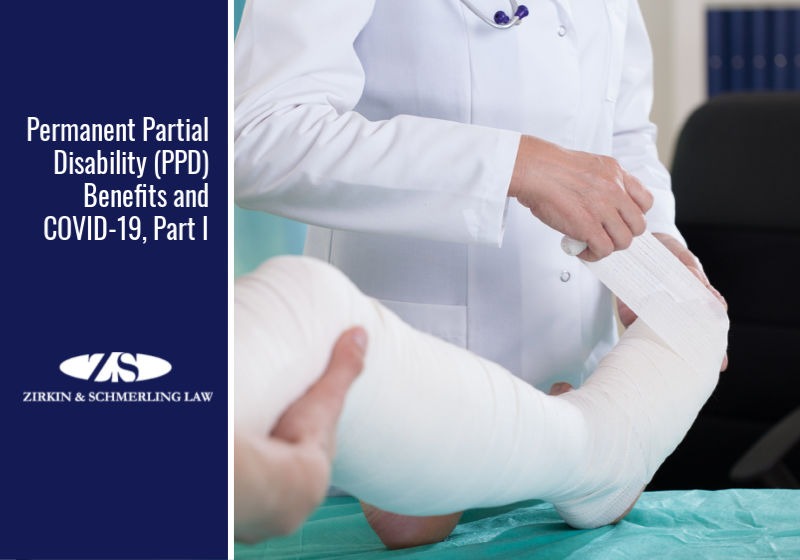
When someone in Maryland is injured on the job, the Workers’ Compensation statute allows that person to receive certain benefits. Those benefits include Temporary Total Disability (TTD) payments, which provide for two-thirds of the person’s average weekly wage during the time the person is totally unable to work due to the work accident. Another class of benefits is payment of all causally related medical costs by the employer or workers’ compensation insurer.
A third class of benefits is what is referred to as Permanent Partial Disability (PPD) benefits. Oftentimes when someone is hurt, they will go through a course of treatment, which could include surgery, therapy, medications, or whatever other medical treatments are necessary to restore them to good health. However, many times, even after the person has gone through treatment and achieved what is known as Maximum Medical Improvement (MMI), the person will still experience some degree of lingering symptoms or issues as a result of the work accident. PPD benefits are designed to compensate for those.
A typical example would be someone who breaks a bone in their hand while at work. Let’s say that person undergoes a surgery and course of occupational therapy which allows them to get back to work after six months. However, the person still experiences ongoing numbness, tingling, weakness and/or loss of range of motion in the affected hand. Most likely the person will always have some degree of lasting effects due to the injury.
At this stage, the person should be “rated” for their level of permanent impairment. Usually, at least two doctors will rate a workers’ compensation claimant as to degree of personal injury: one physician that is contracted by the injured worker or his/her attorney, and one physician by the employer/insurer’s physician. Not surprisingly, the claimant’s doctor will usually provide a higher disability rating than the employer/insurer physician. After that, the two sides will either work out a settlement agreement as to the level of permanent damage, or they will go to a hearing in which a Workers’ Compensation Commissioner will review the medical reports and hear the testimony of the worker as to what ongoing issues are still being experienced. Then the Commissioner will assign a rating to the person’s permanent injuries.
Each body part in Maryland is assigned a different total number of weeks of permanent partial disability benefits. For example, to use our imaginary situation of an injured hand, the maximum number of weeks of permanent partial disability that someone can receive for a hand is 250 weeks of payments. Now let’s say that our injured worker goes to a hearing, and the Commissioner decided that he has suffered a 10% permanent loss of use of his hand due to the work accident. To figure out how much money the person would receive, we would multiply 10% x 250 possible weeks x one-third of the person’s average weekly wage[1]. In 2019, the maximum weekly payment that someone could receive for a 10% hand injury would be $187.00/week.
10% x 250 weeks x $187.00 = $4,675.00 in payments paid over the course of twenty-five weeks.
I hope that example was not too complicated. To summarize, there are several factors that come into play when determining PPD: what part(s) of the body were injured; how badly injured they were, based on independent medical evaluations; and what the person’s average weekly wage was at the time of the injury.
How does this apply to COVID-19? I will address that in Part II.
Contact us or call us at 410-753-4611 to discuss work-related COVID-19 or any other question you may have about workers’ compensation in Maryland.
[1] Up to a certain statutorily-defined maximum that changes from year to year
